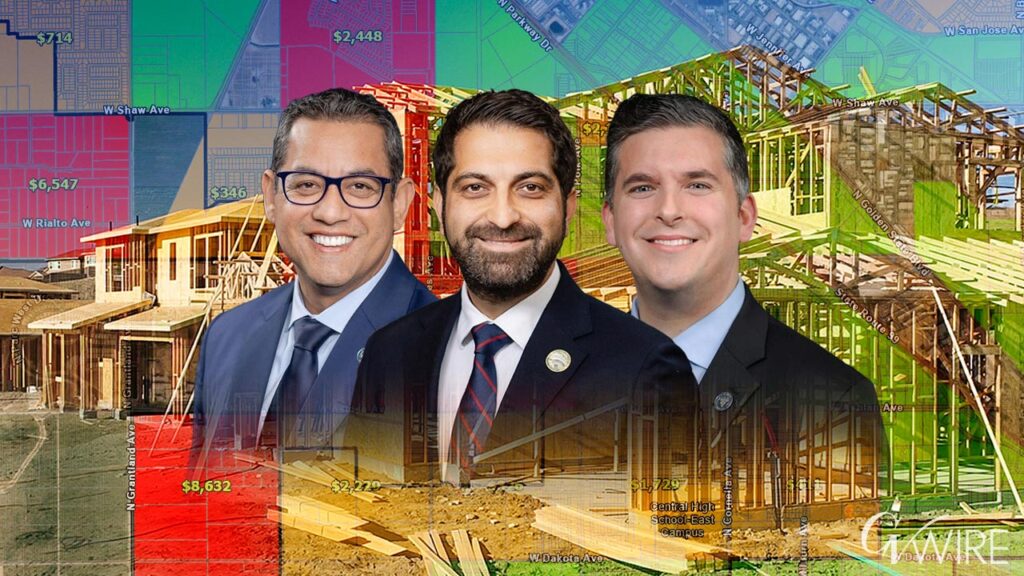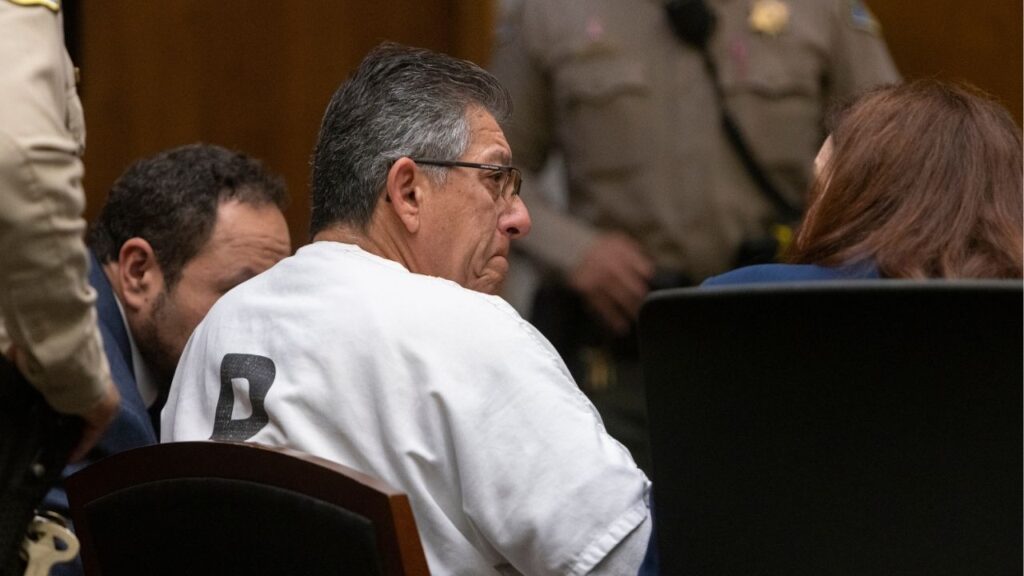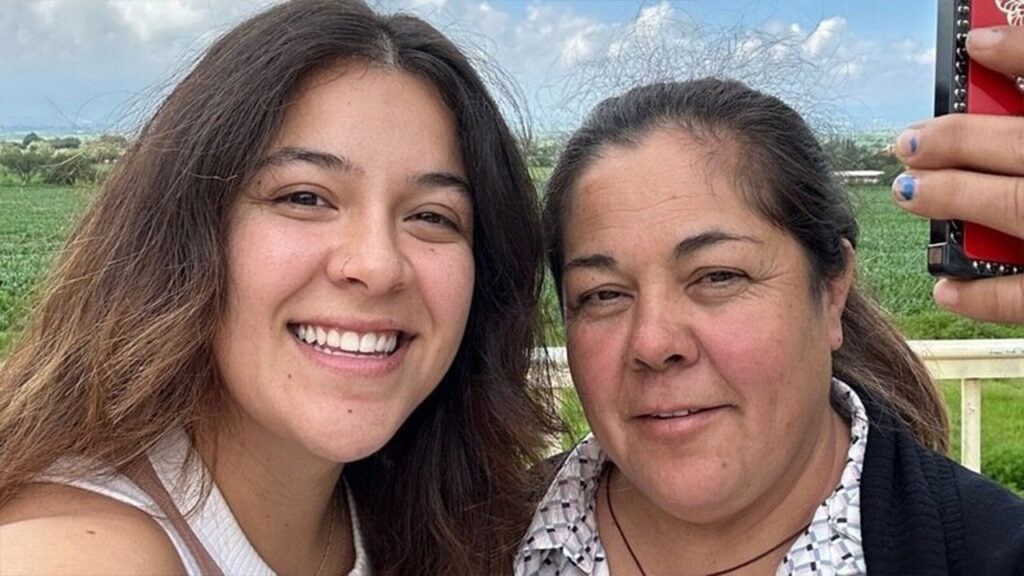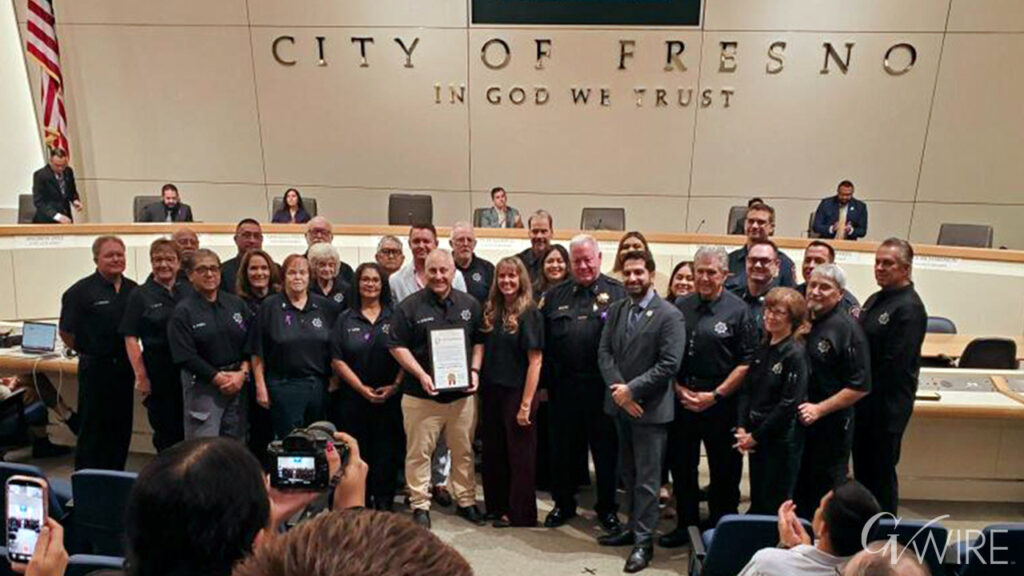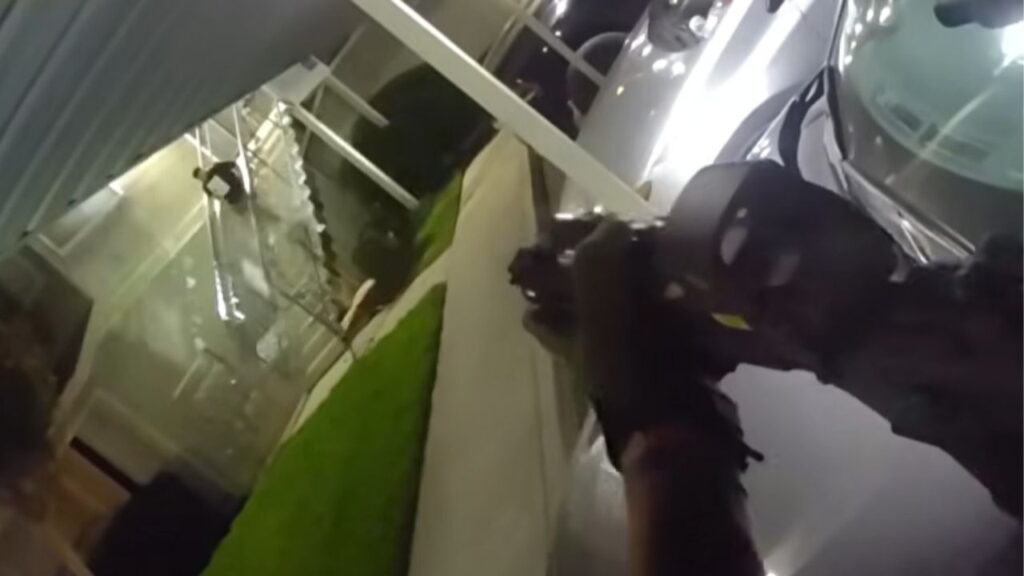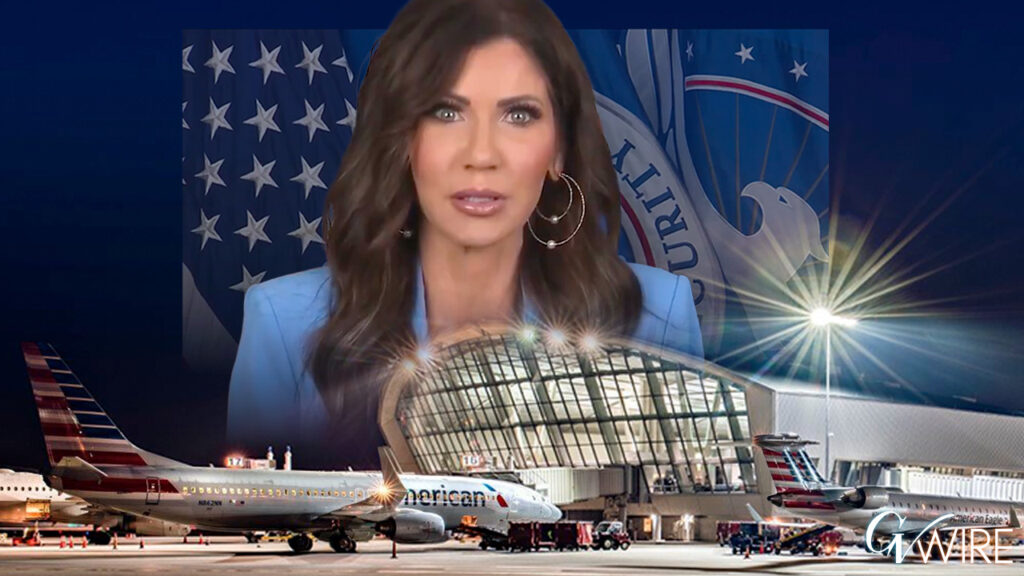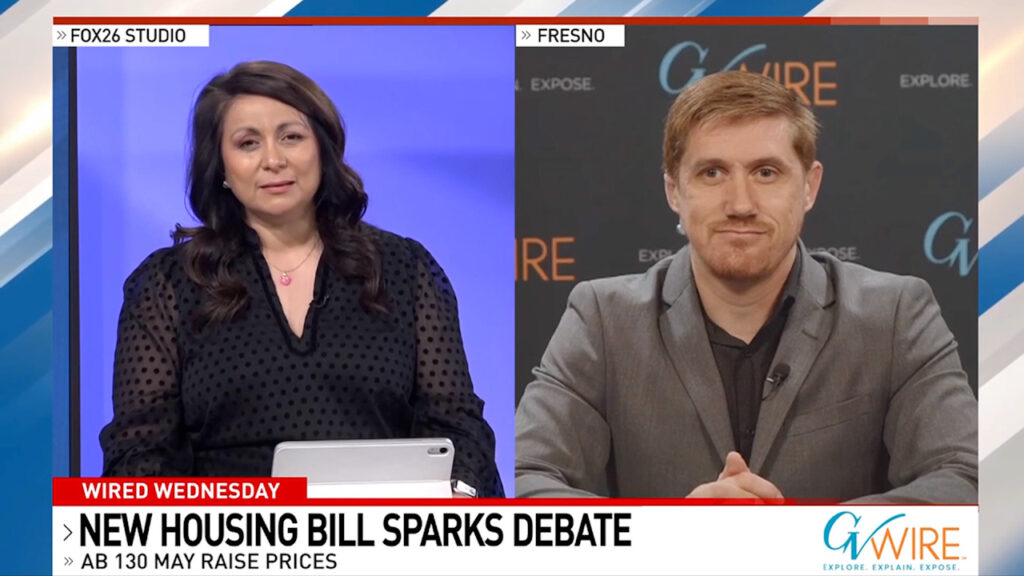
- The Fresno City Council delayed a decision on a tax on outward growth until Oct. 30.
- Councilmember Tyler Maxwell said the city did not consult with council on the projects funded by the tax.
- Council President Mike Karbassi said clarity was needed on the rule before he could support it.
Share
|
Getting your Trinity Audio player ready...
|
With a few questions still unanswered, Fresno City Council decided Thursday to put off a decision on a tax controlling outward growth until Oct. 30.
The council got its first public look at a plan three years in the making that’s intended to reduce how much people need to drive.
The plan simplifies a 12-year-old state law by putting a fee on homes built away from the urban core. That fee then goes to fund 24 public transit and walkability projects.
Zach Gomes, chairman of the board of the Building Industry Association and vice president of Bonadelle Homes, said the plan provides certainty for builders.
“We look forward to a quick implementation of the VMT program as this is something that the building industry needs to move the community forward with certainty,” Gomes said.
Other members of the building industry likewise agreed that it will speed up construction rather than having to rely on lengthy and costly environmental review processes.
Related Story: Fresno Housing Killer Buried in Newsom’s Latest Budget. What Can City ...
Two points arose, however, that councilmembers wanted resolved: What projects get funded by the fee and what neighborhood features builders can add to reduce those fees.
The city has now agreed to work with homebuilders’ concerns about the vehicle miles traveled program before it comes back to the council.
In the meantime, councilmembers will provide input on the list of projects funded by the fee after councilmembers Tyler Maxwell and Miguel Arias criticized the city administration for not consulting councilmembers on which projects should be funded.
“I wish there had been more collaboration in identifying the projects that the VMT funds would go toward because at the end of the day that’s how we’re identifying the cost that we’re going to put into our homeowners and our developers,” Maxwell said.
VMT Makes Getting Grocery Stores in SW Fresno Harder: Arias
Though the highly technical VMT measurement was meant to encourage building homes near job centers, schools, and public transit, it ends up as a tax for outward growth.
And while many homebuilders praised the city’s plan for speeding up the construction process, councilmembers all expressed concern that it raises the cost of homes.
Arias said it’s hard to tell southwest Fresno residents that homes will cost $10,000 more. He added that getting grocery stores — already difficult to get in southwest Fresno — could cost far more because of VMT rules.
“Residents have been asking me for a Walmart or grocery store in southwest Fresno because they’ve been traveling to north Fresno for the grocery stores,” Arias said. “Now I have to tell them that to bring their business, I’ve got to charge them millions of dollars in fees because they’re in a part of town that doesn’t have any development.”
Homebuilders, Councilmember Wanted Workshop
Arias said he wanted a workshop before deciding. He said he wanted to know how much more it would cost to build homes or businesses in his area.
“You’re asking us to approve the fee formula with no ability to know what the actual fee will be for a specific project or parcel?” Arias said.
With fees being project-specific, calculating how much a large retail project would cost becomes difficult.
Granville Homes President Darius Assemi said as a homebuilder, he too wanted a workshop.
“This should have been a workshop prior to today so that the city of Fresno, homebuilders, and homebuyers all know what to expect,” Assemi told GV Wire.
Editor’s Note: Assemi also is publisher of GV Wire.
VMT Wants Mixed-Use. But How Much Does It Actually Help?
Under the plan, when developers build projects, the city of Fresno uses a formula to determine the distances people in those homes or businesses have to drive. Areas in the city’s periphery can get VMT assessments upwards of $8,000 to $12,000 a unit, according to research from GV Wire.
Some commercial developments could face a million-dollar tax, according to city calculations.
To lower those assessments, developments can add sidewalks or bike lanes, but for many projects with higher scores, “you’re going to pay a fee,” said city manager Georgeanne White.
Related Story: Fresno City Council to Weigh New Tax on Outward Growth Thursday
Having job centers near housing developments can also reduce how much homebuilders have to pay, but the big question for councilmembers, homebuilders, and city staff was how much it would be reduced.
During the city’s presentation, long-range planner Sophia Pagoulatos said the state’s goal for VMT was to reduce the number of miles driven by encouraging mixed-use development.
The actual amount those fees get lowered for having multiple types of businesses in a neighborhood was less clear.
Councilmember Nick Richardson during the meeting asked how much having a doctor’s office, a grocery store, and schools near homes lowers those fees.
Pagoulatos said it was complicated, but that those uses would have to be added at the same time to get those reductions.
Assemi said he wanted clarity on how much adding mixed use reduces VMT fees.
“We’d rather make a mixed-use, really attractive, really walkable community … create those all over town, all parts of Fresno, we have at least two of them in Madera County, just north of the river,” Assemi said. “If somebody wants to do that and not increase the price of a home, not pass on any of it to the consumer … we want to have that opportunity.”
Changing land use to accommodate businesses near homes often requires environmental review, which can be a costly, lengthy process, but for larger projects, it could be worth it, Assemi said.
White said it wouldn’t be until after that process that lowering VMT could be considered.
Council President Mike Karbassi said these questions need to be answered before he could support it.
“What I’m looking for as a policymaker is I want clarity that if they do all that work, which is a separate process, there is a pathway,” Karbassi said. “There’s a pathway where if they meet these criteria, they can mitigate. It’s really hard to support something where we don’t know what’s going to happen.”
RELATED TOPICS:
Categories






